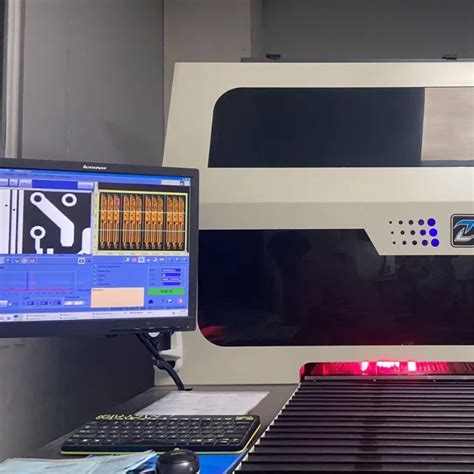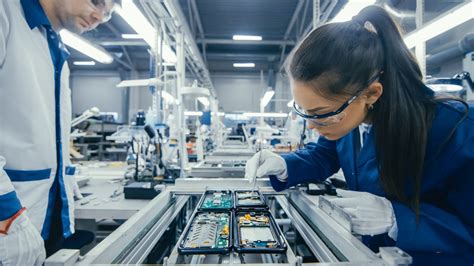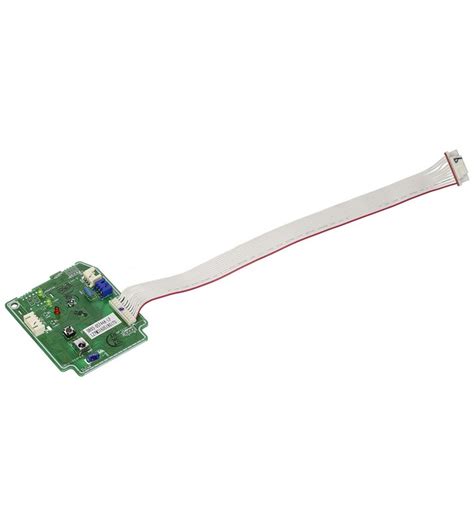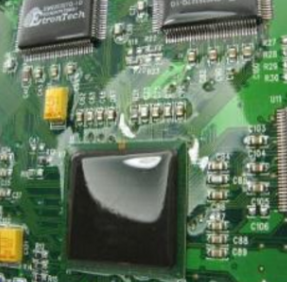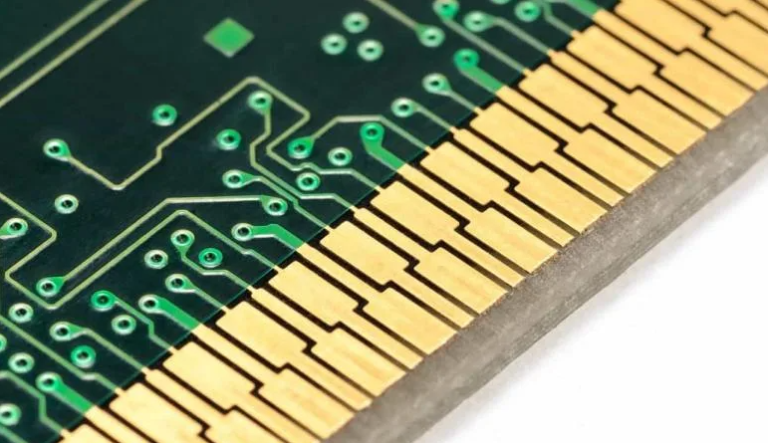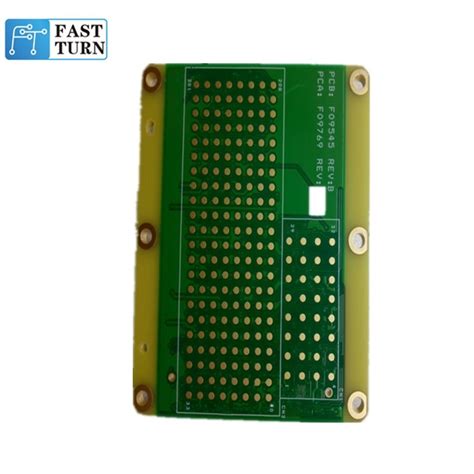The Essential Guide to Bare Printed Circuit Boards: Design & Testing
Key Takeaways
Understanding the significance of bare printed circuit boards (PCBs) in electronics is essential for anyone involved in pcb manufacturing. These foundational components enable electronic devices to function effectively, and knowing the critical aspects can enhance your approach in the field. When considering pcb manufacturing companies, you should pay close attention to key design considerations, which include selecting appropriate materials, optimizing layout for electrical performance, and ensuring manufacturability. A thorough understanding of the pcb manufacturing process can help streamline production while keeping pcb manufacturing costs in check. It’s also vital to explore various testing methods for ensuring PCB reliability; these are integral to preventing failures in increasingly complex applications. As you delve into the pcb manufacturing business, recognize that the landscape is continuously evolving with innovations that promise improved efficiency and performance. Balancing these elements will prepare you to address common challenges while capitalizing on emerging trends and technologies in bare PCB design and testing.
The Importance of Bare Printed Circuit Boards in Electronics
Bare printed circuit boards (PCBs) serve as the backbone of modern electronic devices, providing both the physical support for electronic components and the electrical pathways that facilitate their interconnection. In your exploration of pcb manufacturing, you will discover how these bare PCBs are meticulously designed to ensure optimal performance and reliability. The role of quality pcb manufacturing companies is critical as they utilize advanced techniques to produce PCBs that meet stringent industry standards. However, understanding pcb manufacturing cost is equally crucial for businesses, as it can significantly impact your overall project budget. Engaging with a reputable pcb manufacturing business can aid you in navigating these costs while ensuring high-quality output. Ultimately, the significance of bare printed circuit boards cannot be overstated; they enable innovation in electronics by allowing complex circuit designs to be compiled into compact and efficient formats. This interplay between design and functionality highlights why investing in quality bare PCBs is essential for anyone involved in the electronics sector.
Key Design Considerations for Bare Printed Circuit Boards
When embarking on the journey of bare printed circuit board (PCB) design, it is crucial to understand the factors that will influence both functionality and manufacturability. One of the primary considerations is your choice of materials, as different substrates offer varying levels of thermal conductivity and electrical performance. Selecting the right material can significantly impact the pcb manufacturing cost and ultimately dictate your product’s performance. For instance, if you aim for high-frequency applications, you might need to opt for materials like FR-4 or polyimide that can handle specific thermal and electrical requirements.
Moreover, designing for manufacturability is essential; this involves ensuring that your design can be easily produced by pcb manufacturing companies without incurring unexpected expenses. This means keeping traces appropriately sized and spaced to facilitate the etching process while considering potential hurdles during assembly.
Incorporating test points into your design can also streamline the eventual testing phases, reinforcing reliability in your PCB layout. Remember, an emphasis on a well-thought-out layout not only helps in reducing the pcb manufacturing cost but also plays a critical role in making changes easier during later stages of development.
“Investing effort into meticulous design early on can save you time and resources later.”
By focusing on these intricate details, you position yourself to navigate common pitfalls associated with pcb manufacturing while enhancing the efficiency and reliability of your end product. As you dive deeper into bare PCB considerations, keep in mind how interconnected these elements are with broader industry trends — understanding these intricacies could propel your pcb manufacturing business ahead of competitors.
Understanding the Manufacturing Process of Bare PCBs
The pcb manufacturing process is a critical aspect that determines the quality and functionality of bare printed circuit boards (PCBs). You must first appreciate that this process starts with several key stages, including design, etching, and lamination. During the design phase, specialized software is used to create the layout of circuit paths and other specifications necessary for your project. Following this, pcb manufacturing companies utilize highly-sensitive technologies for etching copper layers on dielectric substrates to form intricate circuit patterns.
A significant factor in the manufacturing process is controlling the pcb manufacturing cost. Factors such as materials used, complexity of design, and volume affect how much you will need to budget for production. These elements are vital as they influence not only the financials but also turnaround times and overall product performance in your pcb manufacturing business.
To visualize these stages clearly, consider the table below:
| Stage | Description | Importance |
|---|---|---|
| Design | Layout creation using CAD software | Sets foundation for functionality |
| Etching | Removal of excess copper | Forms required circuits |
| Laminating | Encasing circuits between layers | Ensures durability |
| Testing | Quality assurance process | Guarantees performance |
Ultimately, understanding these processes allows you to make informed decisions about your PCB project. By focusing on quality materials and reputable pcb manufacturing companies, you can achieve both efficiency and effectiveness in your electromechanical applications. For further insights into high-quality PCB fabrication and solutions tailored to your needs, be sure to visit Andwin PCB.
Testing Methods for Ensuring PCB Reliability
When it comes to ensuring the reliability of bare printed circuit boards (PCBs), a variety of testing methods are employed throughout the pcb manufacturing process. These methods play a vital role in identifying potential defects and ensuring that the PCBs meet industry standards. One common approach is visual inspection, where trained professionals or automated systems scrutinize the PCB for any physical imperfections, such as cracks or misalignment. This initial step is crucial in minimizing issues before further testing.
Following visual inspection, you may encounter electrical testing, which involves checking the functionality of circuits by measuring voltages and currents to ensure that they operate as intended. This type of testing can help flag problems like shorts or opens in connections early on, allowing pcb manufacturing companies to address concerns before products reach consumers. Another indispensable method is thermal cycling tests, where PCBs are subjected to extreme temperature variations to evaluate their ability to withstand thermal stress over time. This is particularly important for ensuring longevity and reliability in various environmental conditions.
In addition, utilizing functional testing can verify that the PCB performs all required tasks within its designated application. By simulating real-life conditions, you can assess how well your PCBs will function post-assembly in actual electronic devices. With these comprehensive testing strategies, companies can effectively manage pcb manufacturing costs by reducing waste and rework due to faulty boards, ultimately leading to a more sustainable and profitable pcb manufacturing business. As technology advances, ongoing developments in testing methodologies will further enhance the reliability assessment of bare printed circuit boards.
Common Applications of Bare Printed Circuit Boards
Bare printed circuit boards (PCBs) serve as foundational components in a wide range of electronic devices, proving their indispensable role in the modern technological landscape. From consumer electronics such as smartphones and laptops to industrial machines and medical equipment, PCBs are integral to functionality. One prominent area where bare printed circuit boards excel is in the automotive sector, where they facilitate the operation of advanced driver-assistance systems (ADAS) and control units. Additionally, you will find bare PCBs making significant contributions to telecommunications infrastructure, enabling seamless communication through networks.
In various pcb manufacturing processes, companies focus on creating high-quality bare circuits that meet specific industry standards. This quality is vital for maintaining performance and reliability across all applications. As you explore different pcb manufacturing companies, it is important to consider their expertise in producing specialized boards that cater to unique requirements like high frequency or increased durability necessary for harsh environments.
Moreover, understanding the pcb manufacturing cost can help you make informed decisions about sourcing these critical components. The dynamic nature of the pcb manufacturing business has led to advances in technology, resulting in improved design philosophies and production efficiencies that drive down costs while boosting performance.
Given their essential functions across various sectors, it’s clear why you should appreciate the significance of bare printed circuit boards. They are not only a technical necessity but also a driving force behind innovation and efficiency in electronics today.
Challenges and Solutions in Bare PCB Design and Testing
Designing and testing bare printed circuit boards (PCBs) involves a variety of challenges that can impact the effectiveness of your pcb manufacturing process. One significant challenge is the intricate balance between design complexity and manufacturability. As circuit designs become more advanced, pcb manufacturing companies must ensure that they can create boards that are not only functional but also cost-effective. The pcb manufacturing cost can escalate rapidly if designs incorporate features that are difficult to produce at scale. Adopting standardized design practices can help mitigate these issues, leading to more streamlined production workflows.
Another common challenge is ensuring that the final product meets stringent reliability standards. This begins with comprehensive testing methods, which may include electrical testing, thermal analysis, and more to validate performance under expected operating conditions. The implementation of automated testing solutions can enhance accuracy and efficiency in assessing PCB reliability before they leave the production floor. Furthermore, collaborating closely with pcb manufacturing business partners allows companies to leverage shared expertise in addressing potential failure points early in the design process.
Thus, being proactive in identifying these challenges and embracing innovative solutions not only lays down a solid foundation for successful bare PCB production but also optimizes performance for various applications across the electronics landscape.
Future Trends in Bare Printed Circuit Board Technology
As technology continues to advance, the field of bare printed circuit boards (PCBs) is witnessing exciting innovations that are transforming their design and manufacturing processes. One of the most significant trends is the increasing integration of advanced materials that enhance the overall performance and durability of PCBs. Companies are investing in research to develop high-frequency substrates and flexible materials that can withstand extreme conditions while maintaining electrical integrity.
Moreover, pcb manufacturing is becoming more efficient due to automation and smart technologies. You might find that pcb manufacturing companies are employing cutting-edge technologies like AI-driven design tools and automated inspection systems, significantly reducing production times while increasing precision. This shift not only lowers the pcb manufacturing cost but also ensures a higher level of reliability in the final product.
Eco-friendly practices are also on the rise, with a growing emphasis on sustainable materials and processes. You’ll see more businesses adopting lead-free solder and other environmentally sensitive techniques, positioning themselves favorably in a market that increasingly values sustainability.
In addition, as demand for compact devices continues to grow, there is an ongoing push towards more intricate designs such as multilayer PCBs. This trend compels manufacturers to enhance their capabilities to meet the needs of the pcb manufacturing business, ensuring they remain competitive in an ever-evolving landscape.
As you consider these trends, it’s clear that keeping abreast of developments in bare printed circuit board technology can greatly influence your understanding of electronics as well as your ability to leverage these innovations in practical applications.
Conclusion
In summary, understanding the intricacies of bare printed circuit boards (PCBs) is essential for anyone engaged in the electronics industry. The design and testing of these PCBs play a significant role in ensuring that electronic devices function correctly and reliably. As you delve deeper into PCB design, you’ll find that the collaboration with reputable pcb manufacturing companies can greatly streamline your projects, ensuring that your designs translate into high-quality products. Keep in mind that the pcb manufacturing cost can vary based on the specifications and volume required, so it’s beneficial to explore different options and select a partner that aligns with your budget and quality expectations. Additionally, establishing a solid relationship with these companies can provide you with valuable insights into innovations in the field, enabling you to stay ahead in a competitive market. By addressing challenges proactively in your pcb manufacturing business, you position yourself for success while embracing emerging technologies that shape the future landscape of electronics.
FAQs
What is the role of PCB manufacturing in the electronics industry?
PCB manufacturing is fundamental to the electronics industry, as it involves the creation of bare printed circuit boards that hold and connect various electronic components. The integrity and quality of these boards directly impact the performance and reliability of electronic devices.
How do I choose a reliable PCB manufacturing company?
When selecting PCB manufacturing companies, it’s essential to evaluate their reputation, quality assurance processes, and capabilities. Look for companies that provide detailed information about their pcb manufacturing cost, lead times, and testing methods to ensure they meet your specific project requirements.
What factors affect PCB manufacturing cost?
The pcb manufacturing cost can be influenced by several factors, including the complexity of the design, material choices, volume of units produced, and any additional services such as testing or rapid prototyping. Understanding these aspects can help you make informed decisions about your project budget.
Can I start my own PCB manufacturing business?
Starting a pcb manufacturing business requires careful planning. Consider market demand, initial investment for equipment and materials, regulatory compliance, and technical expertise in production processes. Researching successful models in your area can provide valuable insights into establishing your own venture.
What are some common issues faced during PCB design and testing?
Common challenges in PCB design include layout errors leading to short circuits or signal integrity issues. During testing, detecting component failures or soldering defects can also pose difficulties. It’s crucial to implement rigorous design checks and testing procedures to mitigate these risks effectively.

